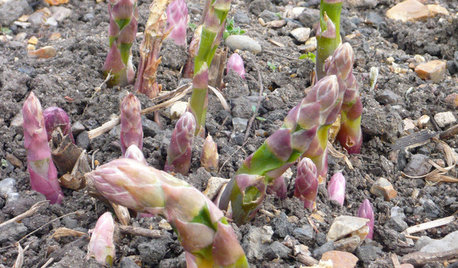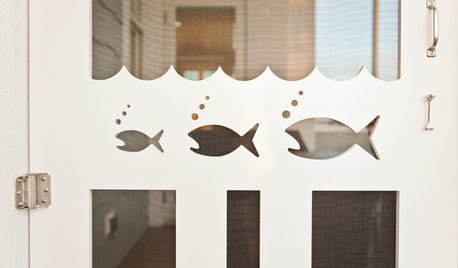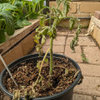Fusarium Crown Rot
whizzer75
17 years ago
Related Stories

TILETop Tile Trends From the Coverings 2013 Show — the Wood Look
Get the beauty of wood while waving off potential splinters, rotting and long searches, thanks to eye-fooling ceramic and porcelain tiles
Full Story
REMODELING GUIDESFlat-Sawn Balusters Give Railings All-Out Style
Showcase designs from Victorian patterns to hints at your hobby with this decorative wood railing detail
Full Story
COOL-SEASON CROPSCool-Season Vegetables: How to Grow Asparagus
Patience pays off with this harbinger of spring that lasts for decades in the garden
Full Story
FARM YOUR YARDHow to Build a Raised Bed for Your Veggies and Plants
Whether you’re farming your parking strip or beautifying your backyard, a planting box you make yourself can come in mighty handy
Full Story
GARDENING GUIDESSmall Carpenter Bees Are Looking for a Home in Your Plant Stems
Provide flowers and nesting sites in your garden for this beautiful, tiny, metallic blue wild bee — your plants will thank you
Full Story
TRIMShutter Cutouts: A Window to One's Soul?
To settle on the perfect shape for this simple detail, follow your heart — or diamond, or maple leaf
Full Story
HOUZZ TOURSMy Houzz: A Smart-Home Jewel in Vancouver
Fully automated, wise about energy use and with ecofriendly features, this Canadian home has become a highlight of the neighborhood
Full Story
TRADITIONAL HOMESHouzz Tour: Pride Restored to a Historic Rhode Island Home
Designers spruce up Narragansett’s first summer cottage while adapting the Victorian-era home for modern living
Full StoryMore Discussions









jean001
whizzer75Original Author
Related Professionals
Kapaa Landscape Architects & Landscape Designers · Salem Landscape Contractors · Coram Landscape Contractors · Corona Landscape Contractors · Fort Myers Landscape Contractors · Galveston Landscape Contractors · Holtsville Landscape Contractors · Mendota Heights Landscape Contractors · Nanuet Landscape Contractors · New Cassel Landscape Contractors · Rockwall Landscape Contractors · Eastlake Landscape Contractors · Destin Siding & Exteriors · Dumont Siding & Exteriors · Waukegan Siding & Exteriorsjean001
whizzer75Original Author
carolyn137
whizzer75Original Author
torquill
whizzer75Original Author
whizzer75Original Author